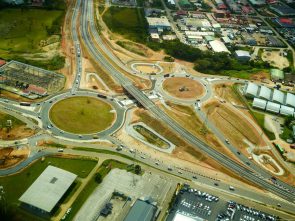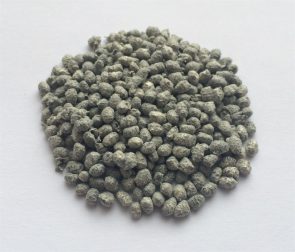RWelast from Roadway Solutions comes to the rescue in French Guiana
First published in Road Surface Technology 2015 as RWelast comes the rescue in French Guiana
Adding polymers is a solution for enhancing the thermo-mechanical properties of asphalt mixes. But sometimes polymer modified bitumen is not readily available, as was the case recently in a French overseas territory.
The solution was RWelast-E, from the French firm Roadway Solutions. RWelast-E has been developed to simplify use of polymers (SBS) in the asphalt mix industry avoiding logistics problems, transportation and storage difficulties and permitting use of polymer modified asphalt mix even on small job sites.
RWelast-E is a pellet made of bitumen modified with SBS elastomer – styrenebutadiene- Styrene. It enables users to produce polymer modified asphalt mix with a modification level adapted to required performance while offering flexibility in its use. Thanks to its pellet form, RWelast-E is ready-to-use in continuous and batch asphalt mixing plants; no need to increase mixing time and temperature.
One of the earliest uses of RWelast-E worldwide was last year in France’s overseas territory French Guiana, situated on the northern South American coast between Suriname and Brazil – known for Cayenne pepper and the aerospace centre in Kourou. French Guiana does not have easy access to polymer modified bitumen (PmB) for road construction.
This was a problem for construction of the Balata roundabout near the town of Cayenne. It will carry around 25,000 vehicles per day, including heavy trucks. Without PmB to produce polymer modified asphalt mix (PmA), roads are far more susceptible to rutting, fatigue and permanent deformation.
Roadway Solutions proposed to the contractor, Eiffage Travaux Publics, building the Balata roundabout near Cayenne, that the client should use RWelast-E.
Eiffage was able to produce a PmA to more than a sufficient level that, in the opinion of both the project owner and the project’s consultants, future maintenance costs will be significantly reduced.
Companies in this article
Roadway Solutions







